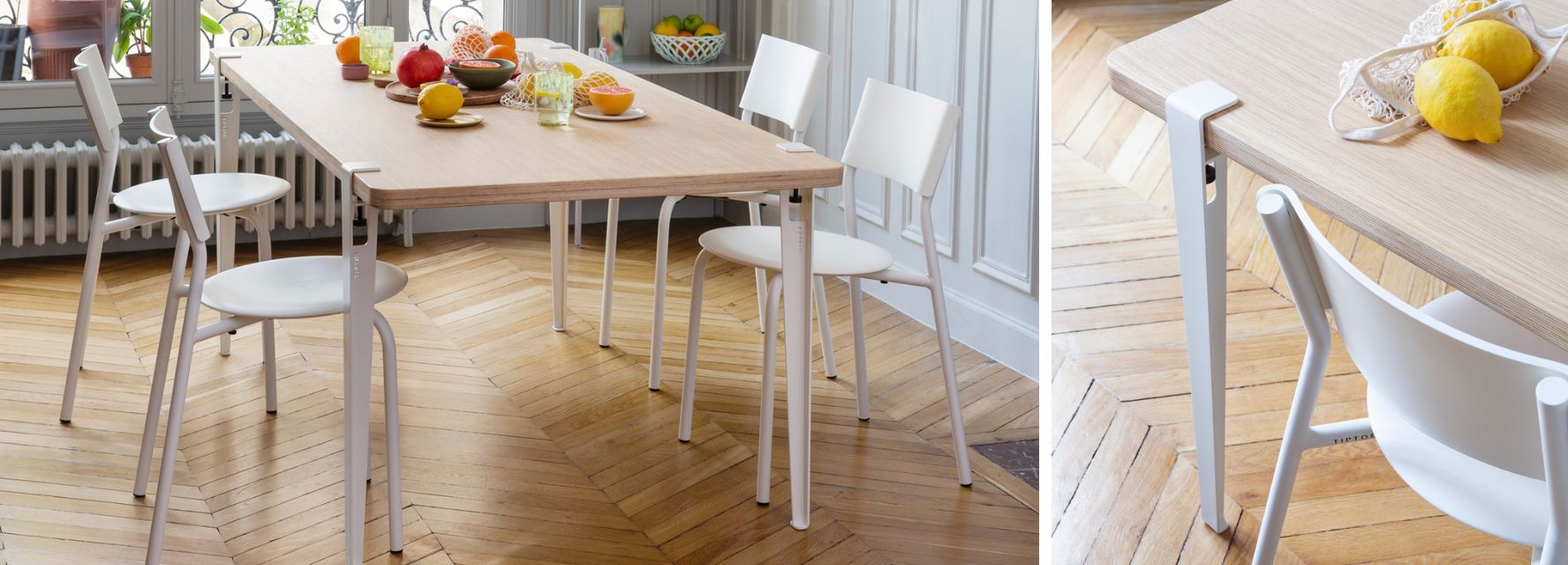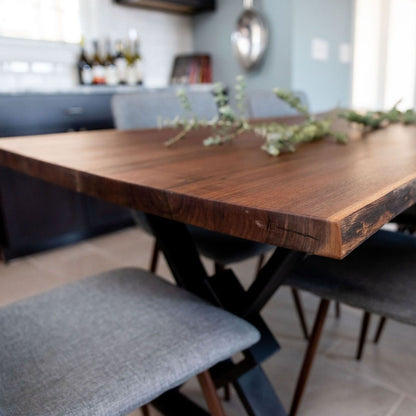Find the Ideal Dining Room Table Legs for Any Interior Design Style
Find the Ideal Dining Room Table Legs for Any Interior Design Style
Blog Article
Professional Tips for Installing Dining Space Table Legs for Maximum Security
When it comes to mounting eating room table legs, accomplishing optimum security is critical for both capability and looks. What particular strategies can enhance security even further?
Choose the Right Legs
When selecting the suitable legs for your dining-room table, it is important to think about both functionality and appearances. The legs you choose will considerably influence the overall style and security of the table. Initially, assess the table's planned usage; if you anticipate constant gatherings, sturdier legs, such as those made from solid timber or metal, may be a lot more ideal, as they use enhanced sturdiness and support.
Next, take into consideration the elevation and design of the legs in connection to the tabletop. Basic table normally vary from 28 to 30 inches in elevation, so make certain the legs straighten with this criterion for convenience. The style of the legs should complement the layout of the table top-- whether it be modern, rustic, or conventional. Conical legs can include a contemporary touch, while turned legs could convey a more classic visual.

Select Appropriate Equipment
How can the best hardware improve the stability and durability of your dining-room table? The selection of suitable equipment is critical to guaranteeing that the legs of your table are firmly connected and able to stand up to routine usage. High-grade screws, screws, and braces provide the needed stamina to support the weight of the table, as well as any type of added lots placed upon it throughout dishes or events.
When picking screws, select those made from sturdy products such as stainless-steel or brass, which stand up to deterioration and maintain integrity over time. The size of the screws is equally important; they ought to permeate deeply into the table's structure without endangering integrity. For bolted connections, take into consideration making use of lock washing machines to protect against loosening up due to vibration or motion.
In addition, utilizing corner braces can add added support, specifically for larger tables or those with much heavier tops. These brackets disperse weight uniformly and help maintain the table's form. Making certain that the equipment you pick is ideal for the certain products of your table will certainly further boost its general stability and long life, permitting you to enjoy your dining experience for several years ahead.
Ensure Appropriate Positioning
Proper placement of dining-room table legs is important for both visual appeal and useful security. Misaligned legs can result in an uneven tabletop, which may not just be aesthetically unattractive yet likewise compromise the table's usability. To attain optimum positioning, begin by gauging the range from the table's corners to the leg add-on points. This guarantees that each leg is located equidistant from the sides, developing a balanced appearance.
Use a degree during installment to verify that each leg is vertical to the tabletop. This step is vital, as also minor discrepancies can escalate right into substantial stability issues gradually. It is a good idea to note the preferred leg positions on the underside check my reference of the table with a pencil or covering up tape before protecting them. This method works as a read the article visual guide, permitting modifications as needed.
Furthermore, confirm the positioning after the preliminary screws are tightened up, as changes might be necessary prior to fully securing the hardware. By prioritizing correct alignment, you not just enhance the table's overall design however likewise make sure that it continues to be steady and useful for years ahead.

Consider Weight Circulation
After making sure correct positioning of the dining-room table legs, it's vital to take into consideration weight circulation to enhance security and capability. dining room table legs. Correct weight distribution is crucial in preventing tottering and making sure that the table can support its desired tons without threat of tipping or breaking down
When placing the legs, ensure they are positioned at equal ranges from the center of the table to evenly distribute the weight throughout the structure. Think about the weight of the tabletop and any kind of items that will regularly hinge on it, such as tabletop appliances or ornamental pieces. Tables with heavier surface areas ought to preferably have legs located closer to the edges, as this maximizes the base of assistance and minimizes the threat of instability.
Furthermore, if the table continue reading this is intended for use in a high-traffic area, think about using heavier products for the legs or adding supporting aspects, such as cross-bracing or a lower shelf - dining room table legs. These modifications can assist keep equilibrium and avoid shifting throughout usage. Inevitably, a well-considered weight distribution technique will significantly improve the table's total performance, guaranteeing it continues to be a practical and appealing focal point for your eating room
Test Stability Prior To Use
Testing the security of the dining room table prior to usage is an important step that ought to not be ignored. If the table shows instability, identify the legs or joints that might call for modification.
Next, inspect that all screws and fasteners are tightened appropriately. Loosened connections can result in instability and potential damages gradually. If necessary, utilize wood adhesive on joints to improve stability, making sure to permit appropriate drying time.

Verdict
In conclusion, the setup of dining-room table legs calls for careful factor to consider of materials, weight, alignment, and equipment circulation to accomplish optimum security. By choosing strong legs and premium bolts, ensuring exact placement, and distributing weight uniformly, the structural integrity of the table can be substantially boosted. Conducting a stability examination prior to regular use even more makes certain that the table will certainly stand up to day-to-day pressures, thus supplying a trusted and secure eating experience.
When it comes to setting up eating area table legs, attaining optimum security is paramount for both performance and aesthetics. The legs you choose will substantially affect the total design and stability of the table (dining room table legs). Basic dining tables generally range from 28 to 30 inches in elevation, so make sure the legs line up with this requirement for comfort.Correct placement of eating space table legs is vital for both visual charm and practical security.In conclusion, the installation of dining room table legs requires mindful consideration of materials, placement, weight, and equipment distribution to achieve optimum security
Report this page